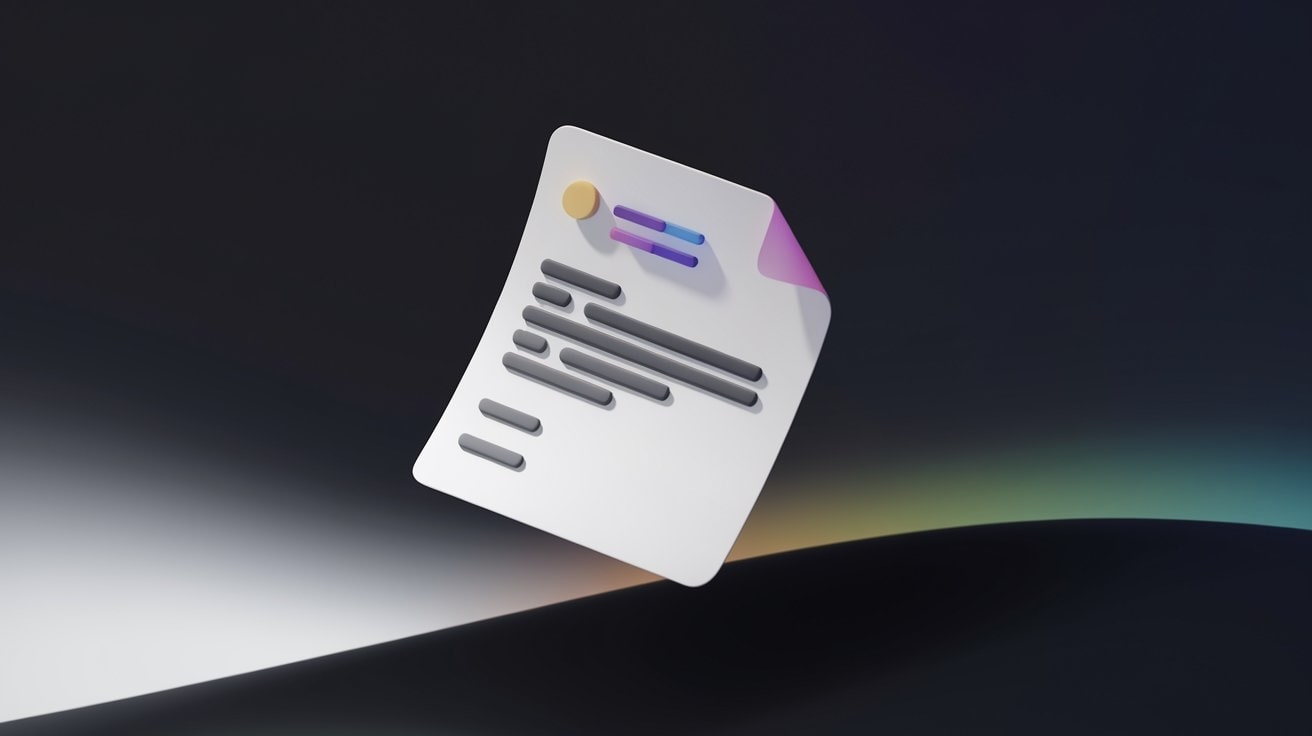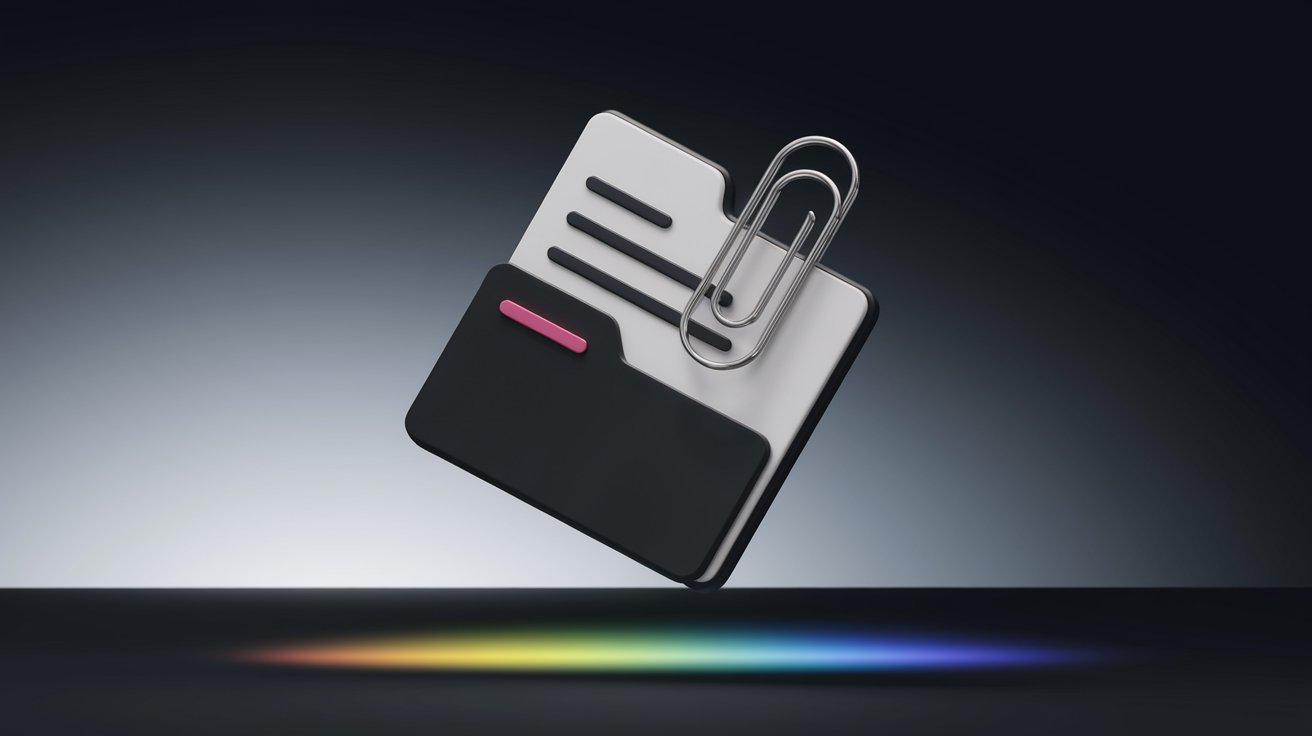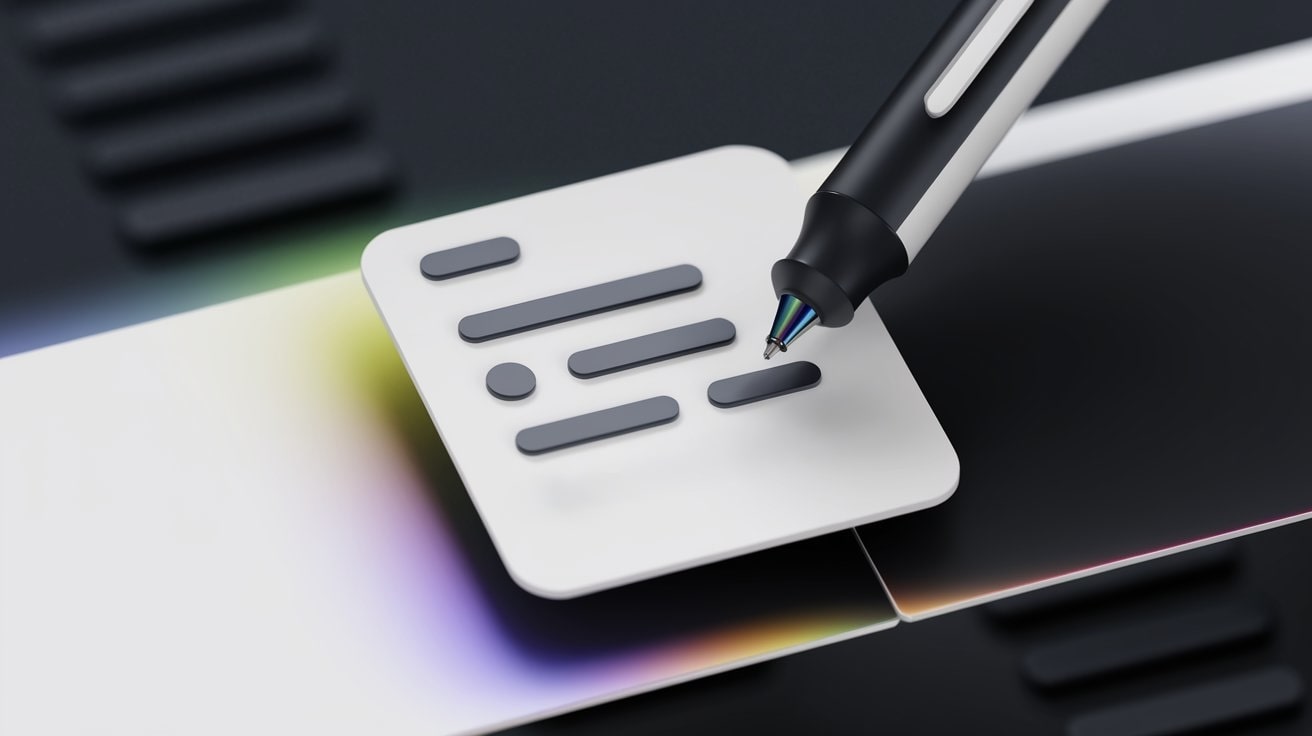Why Email Remains Paramount in 2025
With all the new ways to contact people these days, like messengers, voice notes, and video calls, it might feel like email is old news. It isn't, and, actually, it's more important than ever to know how to write a good email. Here's why.
The Power of a Well-Written Email
Every email you send is another chance to show off your skills and make a good impression. Mastering email etiquette is key to building trust and rapport, both personally and professionally. It gets you more done by cutting out misunderstandings and making processes more efficient. This creates a win-win, improving communication for everyone involved.
Words in an email can have more impact than spoken conversations. That means knowing how to properly write an email is a critical modern skill. If your writing's not up to scratch, you're not going to stand out. If you can write well, people will trust you.
Email vs. Messengers: What’s Still Irreplaceable
Telegram, Slack, WhatsApp, Signal, DMs – sure, they’re fast and convenient. But they’re not designed for accountability, just for close and instant communication.
Email gives you formality, formatting, timestamps, attachments, security (if you use Atomic Mail), and above all: control.
Want your message to look intentional, not impulsive? Email wins. Want to be taken seriously? Learn how to write an email the right way.
Essential Anatomy of a Great Email

What makes one email powerful and another forgettable? The answer is its structure. Every effective email has a 6-part backbone. Once you know that, you’ll understand how to properly write an email that actually gets read and acted upon.
1. Subject Line
The subject line is the first thing people see when they open your email, so it's important to make it stand out and clearly convey what the email is about. Here are some of the best ways to do it:
- Clarity & Conciseness: Short, specific, relevant, under 50 characters.
- Descriptive: Accurately summarize content, avoid vague terms.
- Action-Oriented: Use action words or urgency indicators.
- Personalization: Including the recipient's name can boost open rates.
- Tone: Avoid all caps or excessive exclamation points.
- Keywords: Aid searchability.
- Preview Text: Complements subject line, adds context.
Specificity matters. Ask yourself: Would I open this if I received it in a crowded inbox?
2. Salutation
Always start an email with a respectful greeting, personalizing it with the recipient's name when possible. Formality depends on the relationship and context.
- "Hey Alex" (for casual/personal)
- "Dear Dr. Ng" (for formal)
- "Hi Team" (for internal group messages)
If in doubt, default to polite. It’s easier to dial down later than to recover from being too casual.
3. Body (Core Message)
Introduction
Why are you emailing them? "I'm reaching out because..." or "Following up on our conversation about..." No preamble, no rambling. One to two sentences, maximum.
The Message (The "What")
Keep it clean, use line breaks, short paragraphs (2-4 sentences max), and bullet points if needed.
- What are you asking for?
- Why should they care?
- What’s the context?
Example:
"Following our last conversation, here are the key deliverables:
- Final logo files (attached)
- Branding guidelines draft
- Feedback deadline: August 4"
4. Call to Action (CTA)
This is arguably the most important part. What do you want them to do after reading? Never leave it vague.
- "Could you confirm by Friday?"
- "Let me know if we’re approved to proceed."
- "Please send your edits by EOD Wednesday."
Even if it’s a soft CTA (e.g., "Looking forward to your thoughts"), it should guide the response.
5. Sign-Off
Tone again matters. Match your sign-off to the relationship.
- "Best regards" – neutral and professional
- "Warmly" – friendly but still business-like
- "Cheers" – casual
- "Thanks in advance" – polite and proactive
6. Signature
Use a clean, informative signature. Include (if needed):
- Your full name
- Position
- Company
- Contact info (email, phone, site)
Example:
— Taylor Kim
Product Manager, Atomic Mail
taylor.kim@atomicmail.io | atomicmail.io
Final Example: A Fully Formed Email
Email Writing Basics: What Everyone Needs to Know
Before you dive into templates or frameworks, you need the fundamentals. How to write an email properly starts with understanding the core mechanics of tone, clarity, etiquette, and timing.
Tone, Clarity, and Purpose: Matching Audience & Intent
Would you use the same tone for a job application as for a weekend BBQ invite? Probably not.
- For formal communication: Stick to neutral, respectful language. No emojis. Short, structured paragraphs.
- For casual communication: Lighten up the tone. Emojis can work (if they enhance clarity, not clutter it).
Your purpose defines everything. Are you informing? Asking? Pitching? Clarify that in the first two lines. Wandering intros confuse readers.
🔑 Always ask: Who’s reading this? What do I want them to do? Then match your tone and flow accordingly.
Grammar, Spelling, and Punctuation
Nothing says "I don’t care" like a typo-ridden message.
- Use spell check, but don’t rely on it blindly.
- Keep punctuation clean. Too many exclamation marks look desperate. (One is enough!)
- Break long sentences into two. Clarity always wins over complexity.
- Double-check names, dates, and numbers.
Even the smartest people lose credibility with bad grammar. Writing well = being taken seriously. It’s a trust signal.
Use of CC, BCC, and "Reply All"
Using CC, BCC and "Reply All" in the right way helps to manage information flow. If you don't use it properly, it'll just end up being a mess.
- CC (Carbon Copy): For visibility. Use when someone should see the info but isn’t expected to respond.
- BCC (Blind Carbon Copy): Use when emailing a group that shouldn’t see each other’s addresses (like external contacts).
- Reply All: Use with extreme caution only when everyone needs the reply.
Proper Time
Sending an email at 2 a.m.? It might get buried or give off the wrong vibe.
- Weekday mornings = best response rate
- Avoid Fridays after 3 p.m.
- Use scheduling tools to hit ideal windows
Managing Attachments: Best Practices for Efficiency and Security

Attachments are convenient, but they’re also one of the biggest security gaps in email.
File Naming: Give your attachments clear, descriptive names. "Final_Report_Q3_2025.pdf" is infinitely better than "doc1.pdf."
File Size: Be mindful of file size. Large attachments can clog inboxes, bounce, or simply frustrate recipients with slow downloads. If a file is over 5-10 MB (check common limits, often around 25 MB), consider alternatives:
- Cloud Storage Links: Use links to secure cloud storage (and add access permissions).
- File Compression: Zip large folders or files before attaching them.
File Types: Stick to commonly accessible file types (.pdf, .docx, .xlsx, .jpg, .png). Avoid obscure formats that might require special software.
In-text Reference: Always mention in the body of your email that an attachment is included and what it contains. "Please find the attached Q3 Sales Report for your review." This simple step prevents the "oops, I forgot the attachment!" email.
Encrypt Sensitive Files
If you’re sharing private documents via email, sending internal reports, financial data, and so on, encrypt them.
Use secure email services (like Atomic Mail), which encrypt attachments as well.
Check Before You Hit Send
- Did you include the correct version?
- Did you send it to the right person?
- Are you violating any internal policies or NDAs?
Even one misstep with attachments can lead to legal issues, breaches, or embarrassment.
Email Writing Lifehacks, Techniques & Productivity Boosters
Okay, so you've got the basics of how to write an email. Now, let's talk about how to move from good to great. It's about using smart techniques and tools to make your emails work harder for you, boosting your productivity and influence.
Use Email Threads
Most people treat email like a chat. Big mistake. Email threads are powerful because they create a clear, searchable storyline.
This makes follow-ups easier, avoids confusion, and builds professional habits that save time and sanity. Subject lines should evolve as the conversation does: "Initial Proposal ➜ Revised Draft ➜ Final Review."
Personalize, Don’t Automate
Even if you're sending dozens of emails, they should feel like one-on-one conversations.
- Use the recipient’s name, company, or recent achievement.
- Mention context: "Loved your post on X" or "Congrats on your launch."
Cold? Sure. But it won’t feel cold if it’s human.
Use Proven Frameworks
Let’s break down two of the most effective writing frameworks used by top marketers, executives, and sales pros, and show how they apply to anyone learning how to write an email that gets results.
AIDA (Attention, Interest, Desire, Action): This classic structure helps guide readers smoothly from curiosity to response. It works beautifully for cold outreach, proposals, or any email where you want to persuade.
- Attention: Start with a hook or stat. Example: “Did you know your email might be hitting spam folders 23% of the time?”
- Interest: Back it up with a fact or observation. “We analyzed your domain’s SPF/DKIM settings and found gaps.”
- Desire: Show how you can help. “Atomic Mail boosts delivery and adds encryption by default.”
- Action: Tell them what to do next. “Want a free deliverability report?”
PSB (Problem–Solution–Benefit): Shorter and more direct. This is gold for follow-ups or fixing stalled conversations.
- Problem: Reiterate challenges discussed previously. “Most secure email providers don’t allow secure and private recovery.”
- Solution: Outline how the sender's offering addresses these problems. “We’ve built a seed phrase recovery method into Atomic Mail.”
- Benefit: Highlight gains for the recipient. “You’ll never lose access, even if you forget your password.”
Psychological Triggers That Work
Ethically integrating psychological triggers can influence audiences and drive conversions.
- Reciprocity: Offer value upfront (e.g., free content) to incline recipients to reciprocate.
- Consistency: Encourage small commitments to build momentum towards larger actions.
- Social Proof: Include testimonials, case studies, or user numbers to build credibility.
- Authority: Demonstrate expertise through qualifications or high-quality content.
- Liking/Affinity: Build rapport through common ground, compliments, or a personal touch.
- Scarcity/Urgency: Highlight limited stock or deadlines to prompt immediate action, but ensure authenticity.
- Specificity: More detail enhances relatability and trustworthiness.
Authentic and responsible use of these triggers is crucial to avoid eroding trust.
The Power of Brevity
No one wants to read your novella. Learn to say more by writing less.
- Most emails should be no longer than five short paragraphs.
- Use bold or spacing to highlight key points when appropriate.
- Remove filler words,
- Use bullet points (like this).
Let AI Do the Boring Stuff (But Not All the Writing)
AI can help if you use it smartly. Tools like:
- Grammarly (writing assistant, grammar and tone checks)
- ChatGPT (structuring, tone fixing, summarizing, idea generation)
Important Note on AI:
Always review and edit AI-generated content. AI can sometimes sound generic, make factual errors, or miss the nuanced tone you're aiming for.
Moreover, never share private, sensitive, or confidential information with public AI models. The data you input may be used to train their algorithms, compromising your privacy.
Practical Email Use Cases and Adaptable Templates
Here, we'll give you specific use cases and adaptable templates you can modify to fit almost any situation. It's not about rote memorisation, but understanding the principles behind each template.
Example Template 1: Official Request
Example Template 2: Casual Work Check-in
Example Template 3: Request for Information/Action
Example Template 4: Job Application Follow-Up
Template 5: Email to a Teacher/Professor
Template 6: Informal Email to a Friend/Colleague (Casual Context)
The Privacy Angle: How Writing Emails Can Leak Data
You might think that learning how to write an email ends with the words you choose. But sometimes, what you write, and how you write it, can leak more personal data than you realize.
This is particularly relevant if you use insecure email providers.
Big tech companies are prime targets for sophisticated phishing attacks, data harvesting, and government surveillance. They often build detailed digital fingerprints about your behavior, interests, and habits, and they’ve repeatedly been at the center of massive data breaches.
If you use mass-market email services that don’t offer email encryption, the risks are hiding in almost every message you send:
- Oversharing personal details: Mentioning your travel plans, health updates, family members, or confidential work discussions can be used against you in phishing or social engineering attacks.
- Predictable writing style and structure: Your consistent tone, word choices, and even punctuation patterns can be analyzed to build a behavioral profile or trace messages back to you.
- Leaky metadata: Every email you send contains hidden data (time stamps, IP addresses, device info) that can reveal your location, schedule, and habits.
- Unencrypted content: If your provider doesn’t encrypt emails from end to end, all your messages can be intercepted, scanned, or stored by third parties.
- Dangerous attachments and links: Unsecured files and open tracking links can expose both you and your recipient to malware or surveillance.
- Invasive terms of service: Some providers reserve the right to analyze your emails for ad targeting and AI training, even if they claim it's anonymized.
These risks don’t just apply to businesses or celebrities. Anyone from journalists, freelancers, and students, to activists, entrepreneurs, and everyday users can be exposed through everyday communication.
However, choosing a secure, encrypted email provider helps mitigate these risks from the ground up. It puts you back in control of what you share and who can access it.
Write Securely: How Atomic Mail Helps You Stay Private
Knowing how to properly write an email is only half the battle. The other half is making sure your words and your metadata are protected every step of the way.
At Atomic Mail, we know the vulnerabilities of traditional email, and that's why we've built a service from the ground up to protect your most sensitive digital communications. We're not just here to help you write an email; we'll also make sure it's secure.
- End-to-End Encryption: Your message is encrypted before it leaves your device and stays that way until it reaches your recipient. No middlemen, no loopholes. Not even we can read your emails. Works for both internal and external communication.
- Zero-Access Infrastructure: We’ve created Atomic Mail so that even in the event of a server breach, your data remains encrypted and inaccessible. Your encryption keys are yours alone. We don’t store them ever.
- Anonymous Signup: You don’t need to give away your identity to use our platform. Atomic Mail supports anonymous signup without a phone number verification or providing any personal details.
- Email Aliases Creation: Create unique email addresses for various services to protect your main inbox from spam and breaches, enhancing organization and privacy.
- Self-Destructing Messages: Want to make sure your sensitive message doesn’t live forever? Send self-destructing emails that vanish after a set time.
- GDPR-Compliant Email: We don’t just comply with GDPR privacy regulations, we exceed them. Your data belongs to you. We never sell, track, or monetize it.
- Secure Account Recovery with Seed Phrase: Forget SIM swapping and backup email hacks. Atomic Mail uses a cryptographic seed phrase for account recovery, just like a cryptocurrency wallet. No phone number or password reset tricks. You’re in control.
- No Ads. No Tracking. No Data Mining: Unlike big tech providers, we don’t monetize your inbox. No reading your emails, no personalized ads, no data brokerage.
If you’re ready to send messages that are both professional and private, Atomic Mail is your best choice.
Create a Free Secure Account Now!



